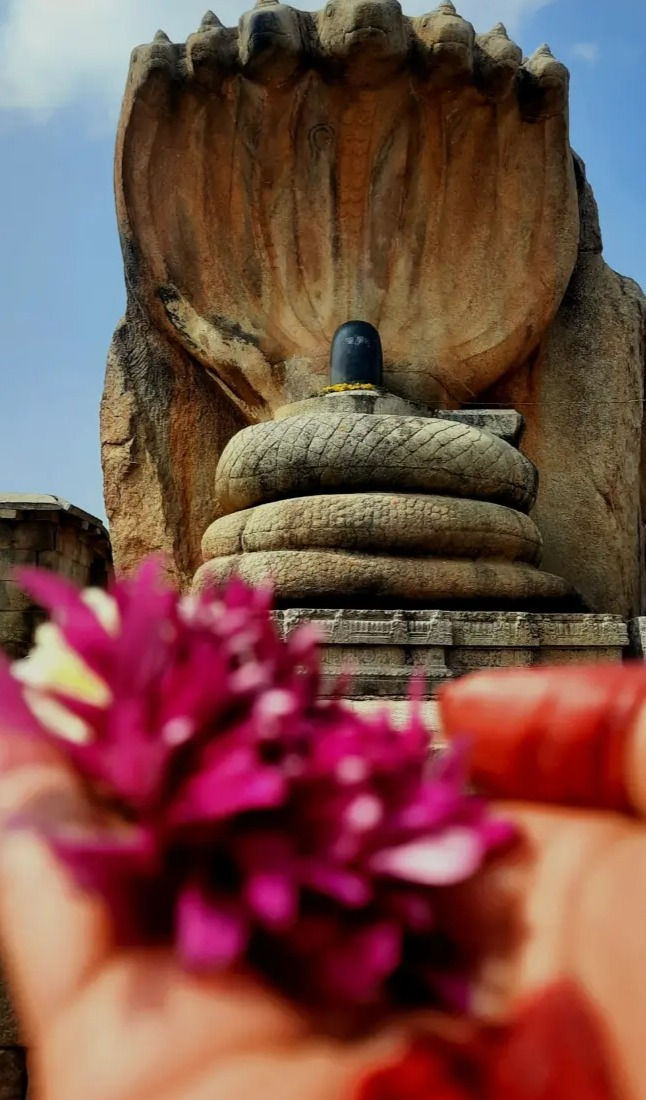The Spiritual Connection of Indian Dance & the Goddesses
- yagyasrivastava017
- Sep 28
- 2 min read

Ya-kundendu-tusharahara-dhavala
Ya-shubhra-vastra-vritta
Ya-veena-vara-danda-mandit-kara
Ya-shveta-padmasana
(Salutations to Goddess Saraswati) who is as radiant as jasmine flowers, the moon, and a garland of snow. She, whose hands are adorned with the veena (symbol of music, art, and harmony). She, who is seated on a white lotus (symbol of purity and transcendence).
Indian classical dance is not merely a performance art — it is a prayer in motion, a sacred offering where every gesture and expression embodies divinity. At its core lies bhakti (devotion), tala and laya (rhythm and tempo), and abhinaya (expression), through which dancers invoke and honor the various Gods and Goddesses. During the time of the nine nights of Navratri, the energy of the Goddesses Durga, Lakshmi and Saraswati, which hold a profound spiritual connection with dance, is celebrated.
Goddess as the Source of Shakti in Dance; the Divine Creative Force
The feminine principle, Shakti, is the cosmic energy of creation. Indian classical dance, with its intricate footwork and flowing movements, channels this same life force. A dancer, when invoking the Goddess, not just imitates her in gestures and Hasta Mudras but embodies her strength, grace, and power. Every movement in Kathak beginning from the centre and moving outward is a manifestation of this creative force. During the various dance segments, the raised hand in abhaya mudra (gesture of fearlessness), the Bhramari / Chakkar or spins symbolizing creation and the cycles of life, or the intricate footwork resounding with vitality—all echo the presence of Shakti.
The Navratri, or nine nights of the Mother Divine, are celebrated with three nights dedicated to each of the three major feminine forces, the first three nights invoking Goddess Durga, the next three Goddess Lakshmi and the last three nights devoted to the energy of Goddess Saraswati.

Goddess Durga & the Dance of Power
The fiercer aspects of the Goddess - Durga and Kali - find expression in energetic and powerful dance segments, with intense, fast-paced footwork, expansive movements and vigorous energy. These performances remind both dancer and audience of the protective and transformative aspects of the divine feminine, where destruction is not chaos, but a transformation, a pathway to renewal.

Goddess Lakshmi & the Dance of Abundance
Dance also embodies Goddess Lakshmi, the goddess of abundance and prosperity. Her energy flows in the lavish costumes, the rhythmic anklets (ghungroos), and the luminous aura a dancer radiates when aligned with grace. In Navratri, dances become channels for celebrating inner and outer abundance.

Goddess Saraswati & Her Blessing for Art
No dance can begin without invoking Goddess Saraswati, the Goddess of knowledge, wisdom, speech and the arts. Most performances begin with a dedication or prayer to Goddess Saraswati. It is through the blessings of Goddess Saraswati, that the purity of the art is maintained and flourishes. For anyone who dances, their body is the instrument and the dance itself is the offering.
Dance as a Prayer
Indian classical dance is inseparable from the divine feminine—it is both a prayer and a path to self-realization. During Navratri, this connection intensifies, as every movement becomes an invocation, every rhythm a heartbeat of the divine feminine, and every expression a mirror of the Goddess within.




Comments